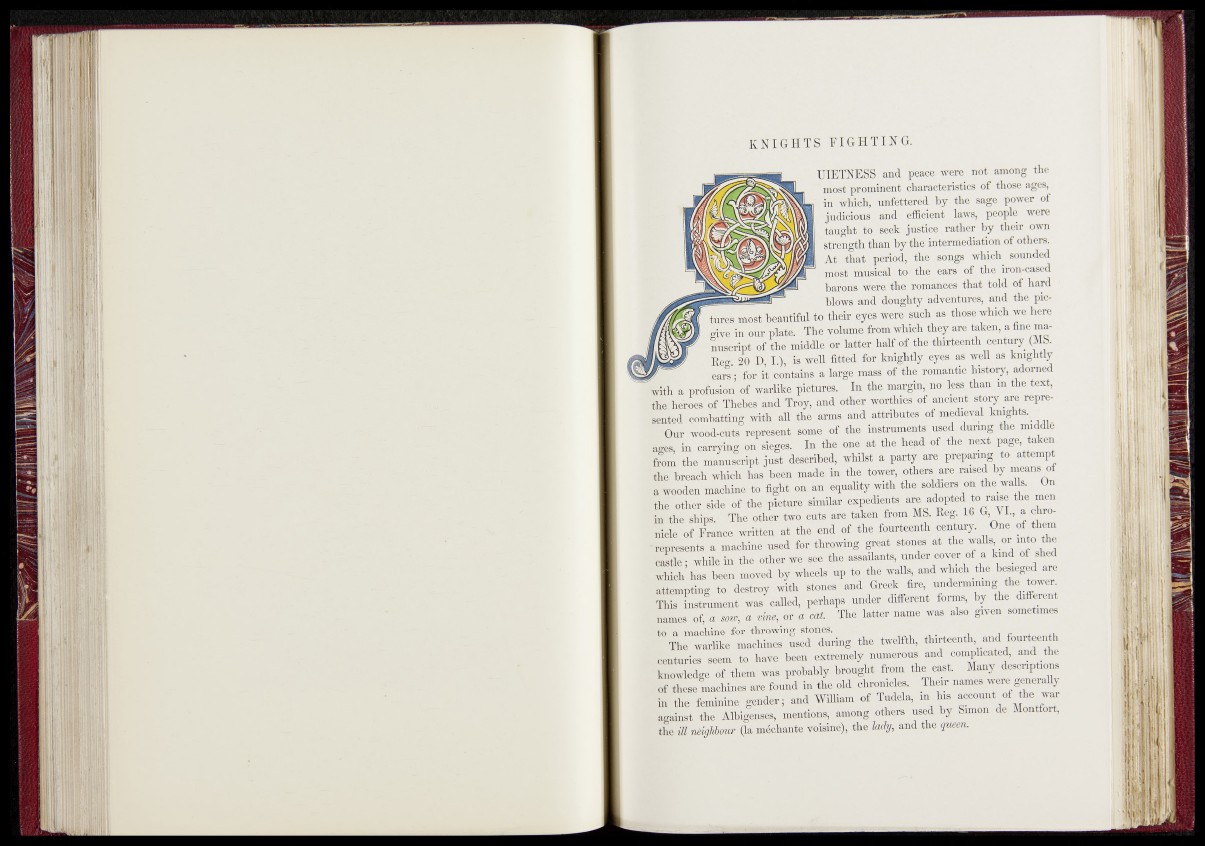
HlETNESS and peace were not among the
~ most prominent characteristics of those ages,
■ ,in .which, unfettered by the sage power of
judicious and efficient laws, people were
taught to seek-justice rather by their own
strength tha^by tke intermediation.of others.
| f a that period, the songs which sounded
most musical to'the ears of the iron-cased
barons were'the romances that told of hard
H J H blows and doughty adventures, and the pieftures
most beautifd.to their.eye§;were'such as those which we here
— I our plate. Tbe- volume from which they are taken, a fine ma-
nuscript of the-middle or latter f f i a ¥ :b l |0 ^ e e n th nentury_ (MS.
Eeg 20 D l i t i s well fitted for knightly .eyef as well as knightly
| ears'; 4br.|-contains a large mass of'the romantic history, adorned
W i a profusion of warlike pictures. In the margin,-,no less than m the text, BIBMM of Thebes and'Troy, and other %orthresjof ancient-.Story arerepre-
f e t e d combatting with all the arms and attributes ^medieval knights.^ ’
Our woodcuts represent some ,of the used, during the middle
ages, in carrying' on -sieges.' In the one,at the H - o f the next, page taken ■ H i the manuscript .just described, I Q a party are preparing to attempt
I k e breach which has been-made in the to%er, others are raised by means of
f e e o d e n machine to fight on. an equality with tjia'soldiers on the walk On
the other side ofihe picture « t e r gHg MB I the Ships. The other two ejife-are taken *em MS. Keg. 1« fa, VI, a c
f e e of France written at the .«*i <* fourteenth B B B H
represents a machine used for throwingt S^Sit. stones at-tlj'e :walte, or mto * e
.« itle ; while in the oiher we see the a s sa iten tj.« « : c o y of a 1 y d of shed
which has been mowed b? wheels up te .t^twills, and which the ly e g ed are
I attempting "to" destroy with stones-and'®sek fire, undemnmng thet tower
S i s L a m e n t B — fcnT H I
names of; a sow, a mm; or a cat. M igajg-naim e was also given sometimes
Ifetb a machine for., throwing stones. . j| , ,
. I The warlike machines used -during the twelfth, thiyenth, and fo u rty th
■centuries seem to H .been extremdy numerous and. etjtsplicated, apd the
knowledge of them was pfotfijjy brought from the e y Many desorption»
of these machines are found in H H n H B u i S
in the feminine gender, and William of Tudda,- m to ; y o u n t of the war
against the Albigepses, mentions, .among used fag Smion de Montfort,
S i i lM S i i n -rr\dxn\ « ! the M , and the queen.